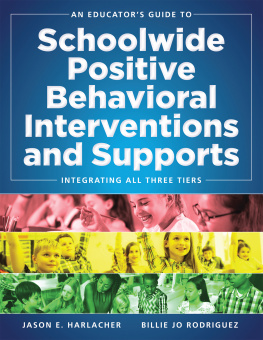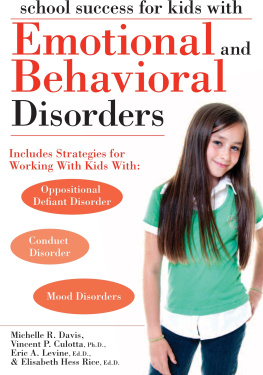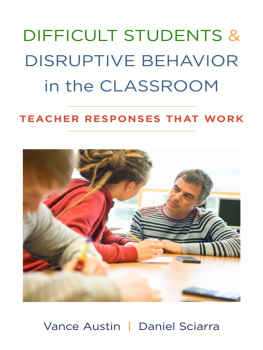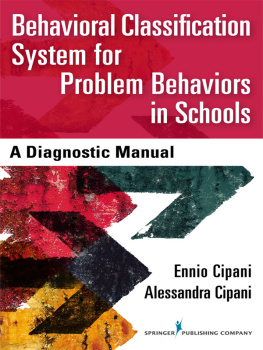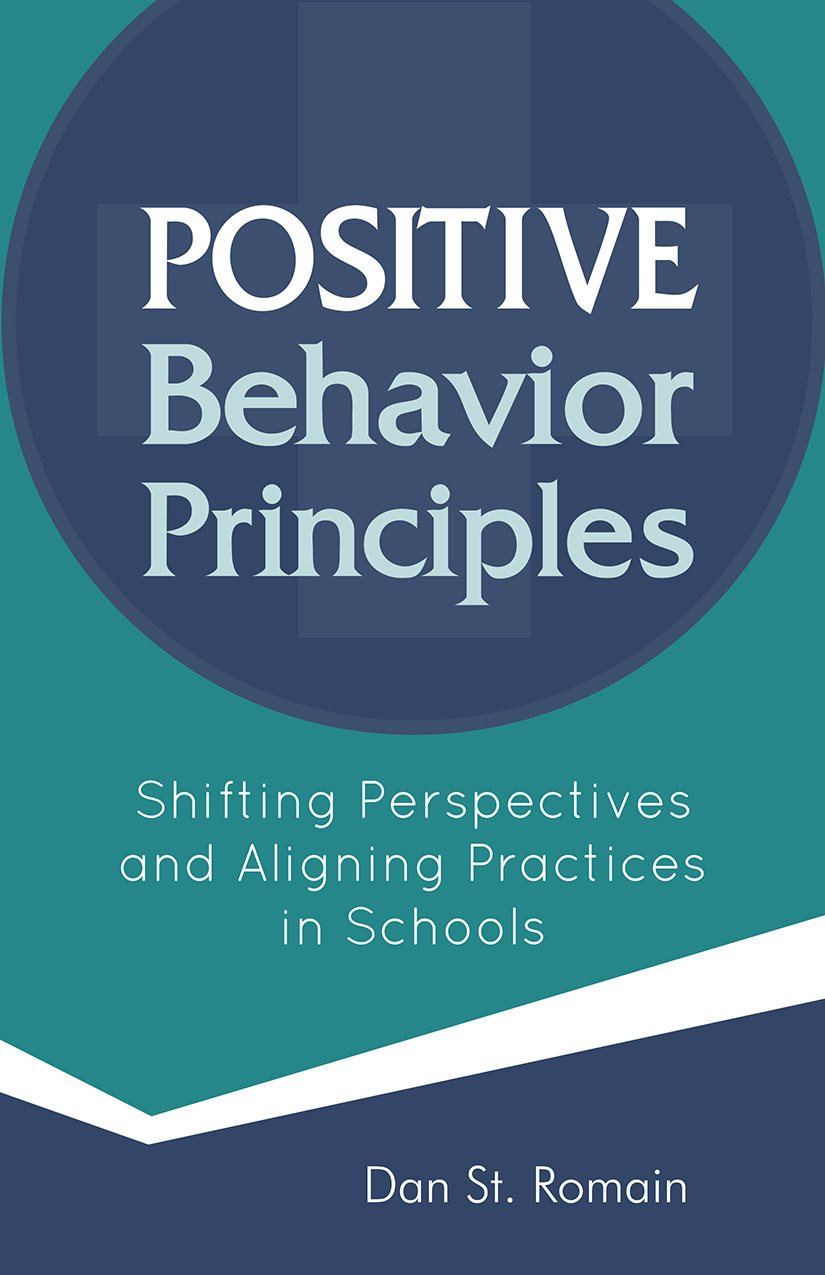Dan St. Romain
Positive Behavior Principles
First published by National Center for Youth Issues 2021
Copyright 2021 by Dan St. Romain
Third party links are accurate at the time of publication, but may change over time.
Duplication and Copyright
No part of this publication may be reproduced, stored in a retrieval system, or transmitted in any form by any means, electronic, mechanical, photocopy, recording, or otherwise without prior written permission from the publisher, except for all worksheets and activities which may be downloaded and reproduced for a specific group or class. Reproduction for an entire school or school district is prohibited.
The information in this book is designed to provide helpful information on the subjects discussed and is not intended to be used, nor should it be used, to diagnose or treat any mental health or medical condition. For diagnosis or treatment of any mental health or medical issue, consult a licensed counselor, psychologist, or physician. The publisher and author are not responsible for any specific mental or physical health needs that may require medical supervision, and are not liable for any damages or negative consequences from any treatment, action, application, or preparation, to any person reading or following the information in this book. References are provided for informational purposes only and do not constitute endorsement of any websites or other sources.
First edition
ISBN: 978-1-95-394536-5
This book was professionally typeset on Reedsy
Find out more at reedsy.com

Praise for Positive Behavior Principles
The Positive Behavior Principles make so much sense. Dan speaks in such a way that leaves you excited, nodding your head yes constantly, and wondering why you didnt figure all of this out yourself. I highly recommend Dans work for its relatability, ease of reading, and great sense of humor in the midst of making connections and discoveries.
Malia Huffman, Counselor
Cloverdale, Virginia
Adopting these principles shifted my approach to classroom management, and as my perspective changed, so did my outcomes. Rather than expecting compliance with my policies and systems, I began connecting with individual students and strengthening relationships. In the most challenging situations, I no longer expect too much at once. I start with one or two small, concrete target behaviors and build on successes. These principles have given me strategies that have worked and have resulted in transformation in my classroom.
Elizabeth McLeod, Teacher
Monterey, California
As a seasoned educator and now, an instructional coach, I find the strategies and techniques in this body of work to be a significant shift from how we, as veteran teachers, were once taught to address behavioral challenges. Classrooms move from a place of rules and consequences to engaging communities filled with choice and rigorous achievement grounded in meaningful relationships. I have become a huge advocate for the message and meaning behind the Positive Behavior Principles and have watched them transform the way teachers teach and learners learn.
Barbara DLeise Triplett, Instructional Coach
San Antonio, Texas
Dan has worked with teachers in my former and current districts over the course of the past five years implementing the Positive Behavior Principles, and our students have derived a great deal of benefit from learning from teachers who build strong relationships with them and who understand the value of teaching skills that help our students make better behavioral choices each day.
Dr. Daniel Loughran, Assistant Superintendent
Franklin, New Jersey
Our paradigm in education, when students misbehave, has been consequences and punishments such as detentions, suspensions, and even expulsions, with little success. Dans body of work teaches us that our paradigm needs to shift so the messages we send to kids are that we want them in school and think they are worth the time and effort, and through the relationship, they will want to do better and so will we.
Dr. Jean Anderson, Special Education Director
Kearney, Nebraska
Dans language around behavior has become engrained in our school culture, making it easy for me, as well as teachers and support staff, to communicate with children using the same language and expectations for our students. The Positive Behavior Principles have helped our staff change deep-seated beliefs and practices that no longer serve them or their students well.
Brandee Sabala, Principal
Gooding, Idaho
The focus on positive principles for behavior management and changing the way we view behavior not just in children, but adults as well, is such a game changer for how educators manage discipline. I now believe children who come into my classroom with the most difficult challenges are lacking skills to manage their own behaviors, and that I can help them through teaching lessons on self-regulation. This body of work has truly inspired me to become a better teacher.
Amanda Hawes, Teacher
Aransas Pass, Texas
In seeking to create a school-wide, multi-tiered system of support for behavior, it can be challenging to wade through the gamut of evidence-based programs and strategies. This book, however, breaks down each tier of intervention, clearly spelling out instructional strategies that can be successful regardless of whether or not the school has adopted a particular program.
Liz Meredith, EdD, Director of Curriculum and Instruction
Byesville, Ohio
Introduction
I just want to teach. Is that too much to ask? This was the sentiment of a new high school teacher I was coaching. At the time, I had just started working at our regional education service center, and as part of my new duties, I was charged with going into schools and providing consultative behavior support to teachers. Needless to say, there was no shortage of work for me. I went into education because I love math, the teacher told me. When I went through school, one of my teachers instilled in me a love for math, and I just want to pass that love on to my students, but I cant, because I spend all of my time dealing with behavior problems. After observing her class, I agreed.
This was not the first time I had heard some version of this story. I felt overwhelmed and at a loss for what to say. After providing her a few strategies, I wished her luck, told her I would pray for her, and went on my way. I spent that entire week going from class to class, putting out one fire, only to have another one pop up somewhere else. Is that it? I thought. Strategies, luck, and prayer? I knew something had to change.
I was one of three behavior consultants offering support in the region, and our job seemed unrealistic. Fortunately, around this same time, my colleagues and I were exposed to a body of work by George Sugai, a researcher from the University of Connecticut, called Positive Behavior Support, as well as training in the Boys Town Education Model (BTEM). Both models emphasized taking a prosocial approach to behavior management, using discipline as an opportunity to teach positive behaviors. The information intrigued me enough to dive in at a much deeper level.
Because the regional needs outweighed the amount of support the three of us were able to provide, my coworkers and I designed the ABC Program. As a way of






